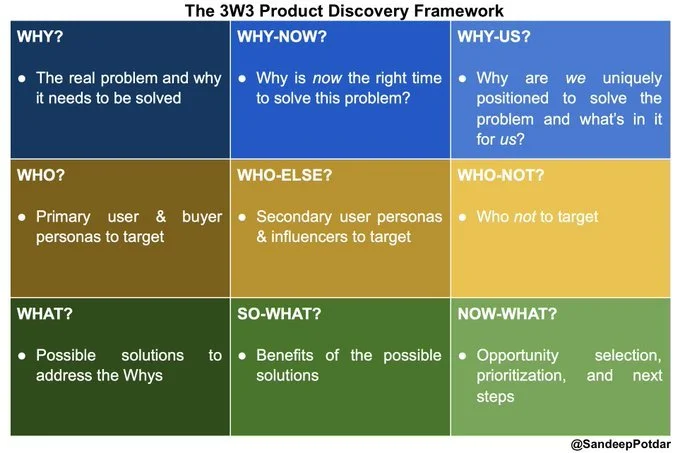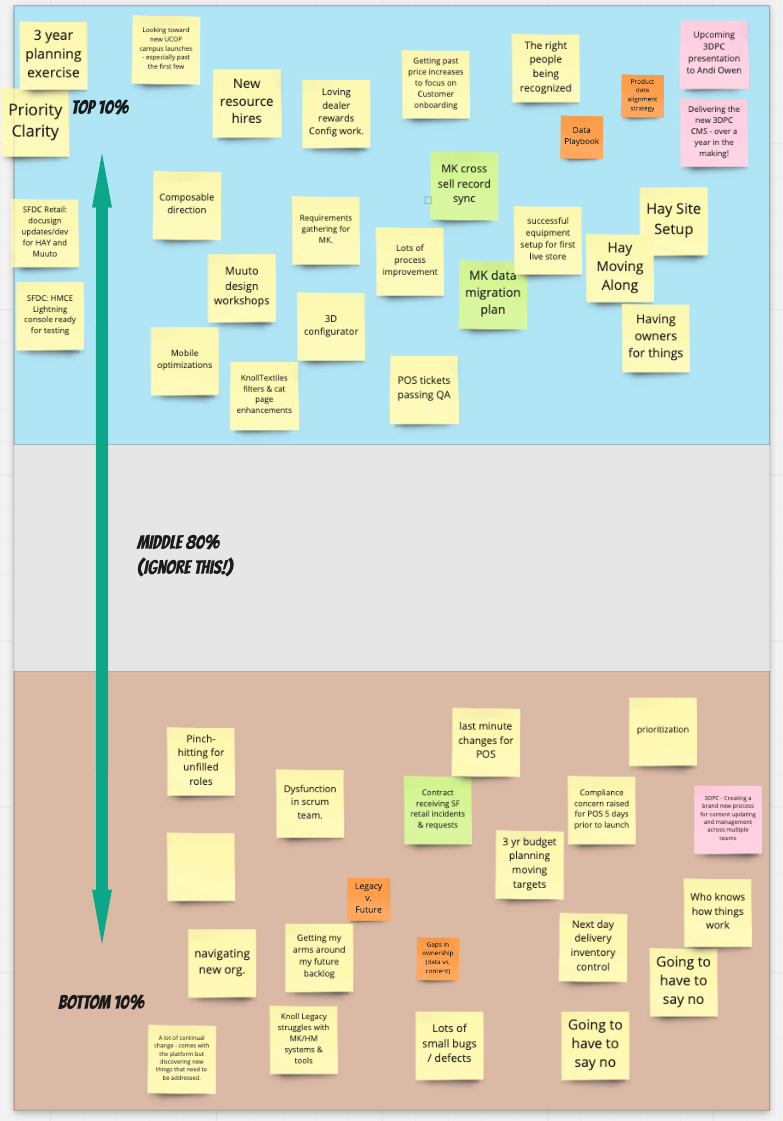I often follow product managers on Twitter to see what types of interesting frameworks they are using for their own teams. Sandeep Potdar posted what he calls the “3W3 Product Discovery Framework” to structure the beginnings of product discovery. The left hand column is the basic structure of discovery - the who, what, and why. (Most product managers are familiar with the 5-Whys that help dig somewhat deeper.) However, it is the additional columns that make this approach interesting; the follow-up questions are the real meat.
Beginning to ask these questions can help direct a course to success. And the “so-what” / “now-what” are excellent jumping off points for a business case or rationalization. But even more established products can benefit from revisiting these questions, ensuring the answers are in the current targets and roadmaps, and keeping the team on track.
STAND-UP EXERCISE
Ask your team to read through as much of the Twitter thread from Sandeep Potdar as possible before the meeting. Come prepared to discuss if they’ve answered these questions for their product and audience. By reviewing these questions, are they seeing any unexplored areas or opportunity for further investigation? Further, what key questions are missing here? What other research areas are necessary to explore? What types of “where” or further “when” questions could be formulated?







